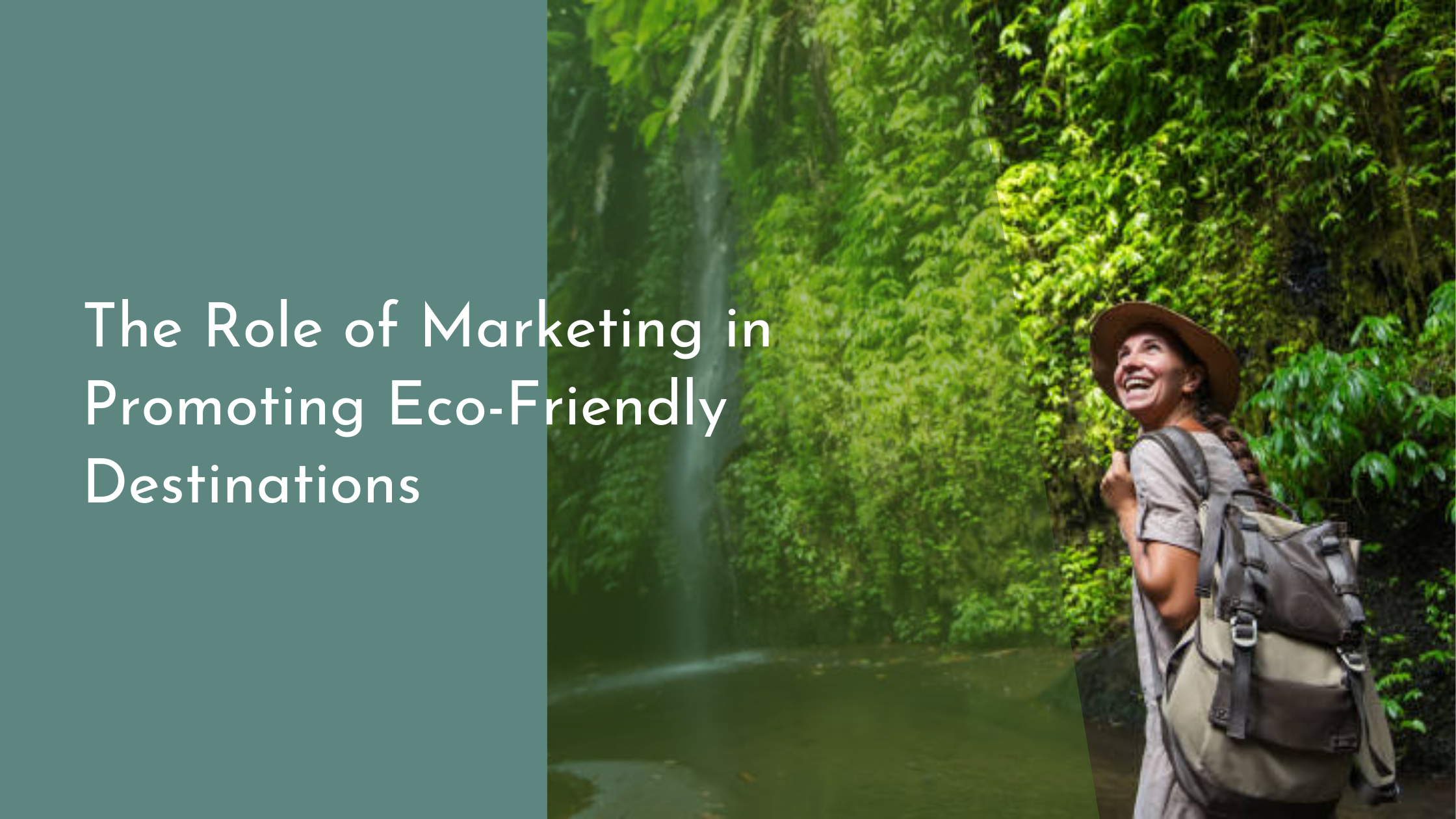The Role of Marketing in Promoting Eco-Friendly Destinations
The Role of Marketing in Promoting Eco-Friendly Destinations
In an era where sustainability is more than a buzzword, eco-friendly tourism has emerged as a major player in the travel industry. Travelers are increasingly seeking experiences that align with their values, leading to a surge in demand for eco-friendly destinations. Marketing these destinations effectively is crucial for their success, ensuring that they attract the right audience while promoting sustainable practices. This article explores the role of marketing in promoting these green havens, delving into current trends, effective strategies, engaging storytelling, and notable successes.
Understanding Eco-Friendly Tourism Trends
The shift towards sustainability in tourism is not a fleeting trend but a significant transformation in the industry. More travelers are conscious of their environmental footprint and seek destinations that prioritize the planet’s welfare. This shift is driven by increased awareness of climate change and a growing preference for experiences over material possessions. Eco-friendly tourism is about offering authentic experiences that support local communities and preserve natural resources, creating a win-win situation for both tourists and the environment.
Eco-friendly destinations range from pristine natural parks to charming coastal towns dedicated to conservation efforts. These locations provide unique experiences that emphasize connection with nature and local cultures. The focus is on low-impact travel that minimizes carbon emissions, encourages conservation, and supports local economies. As more travelers seek out these experiences, the role of marketing becomes critical in educating and attracting the right audience to these destinations.
Strategies for Marketing Green Destinations
Marketing eco-friendly destinations requires a nuanced approach that balances promoting the destination’s attractions with its sustainability credentials. One effective strategy is to highlight certifications and partnerships with recognized environmental organizations, which can build credibility and trust with potential visitors. Offering transparency about sustainable practices, such as waste management and energy use, also reassures eco-conscious travelers.
Another strategic approach is leveraging digital platforms to reach and engage target audiences. Social media and content marketing can showcase the unique aspects of eco-friendly destinations through stunning visuals and compelling narratives. By using targeted advertising and influencer partnerships, marketers can reach niche markets interested in sustainable travel. These strategies not only increase awareness but also encourage travelers to choose destinations that align with their values.
Engaging Audiences with Sustainable Stories
Stories have the power to inspire and influence behavior, making them an essential tool in marketing eco-friendly destinations. Crafting narratives that highlight personal experiences and emotional connections with nature can captivate audiences and motivate them to visit. Sharing testimonials from travelers who have experienced the destination can also add authenticity and relatability, making the destination more appealing.
In addition to personal stories, sharing the journey of the destination’s sustainability efforts can engage environmentally conscious audiences. This might include documentaries or short clips about local conservation projects, interviews with community leaders, and behind-the-scenes looks at eco-friendly practices. By involving the audience in the narrative, marketers can foster a sense of participation and investment in the destination’s sustainable goals.
Celebrating Successes in Eco-Friendly Promotion
Many destinations have successfully harnessed the power of marketing to position themselves as leaders in eco-friendly tourism. For example, Costa Rica has long been celebrated for its commitment to sustainability and has used marketing to highlight its rich biodiversity and conservation efforts. By building a brand around eco-tourism, Costa Rica attracts visitors who are eager to explore its natural wonders while supporting its green initiatives.
Another success story is Iceland, which has effectively marketed its geothermal energy and natural beauty to eco-conscious travelers. Through creative campaigns and partnerships with influencers, Iceland has positioned itself as a must-visit destination for those interested in sustainable travel. These successes demonstrate the impact of strategic marketing in promoting eco-friendly destinations and the potential for other locations to follow suit.
The role of marketing in promoting eco-friendly destinations is pivotal in driving the future of sustainable tourism. By understanding current trends, employing effective strategies, engaging audiences with compelling stories, and celebrating successes, marketers can play a significant role in shaping travel behaviors. As the demand for eco-friendly destinations continues to grow, the travel industry must adapt and innovate to ensure that these destinations not only thrive but also contribute to a greener planet. Through thoughtful and strategic marketing, the vision of sustainable tourism can become a reality, offering travelers memorable experiences while protecting the Earth’s precious resources.

